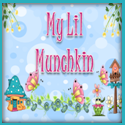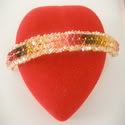(Excerpts from 700 Club Spiritual Bulletin)
Since Halloween itself originated in paganism, it is not surprising that its customs are related to pagan belief. According to the Encyclopaedia Britannica,
In ancient Britain and Ireland, the Celtic Festival of Samhain was observed on October 31, at the end of summer…. The souls of the dead were supposed to revisit their homes on this day and the autumnal festival acquired sinister significance, with ghosts, witches, goblins, black cats, fairies and demons of all kinds said to be roaming about. It was the time to placate the supernatural powers controlling the processes of nature. In addition, Halloween was thought to be the most favorable time for divinations concerning marriage, luck, health, and death. It was the only day on which the help of the devil was invoked for such purposes.
Halloween symbols, customs, and practices undoubtedly have had a variety of influences upon Western culture throughout history. However, in early American history, Halloween was not celebrated due to America’s strong Christian heritage. It was not widely observed until the twentieth century. Initially, it was practiced only in small Irish Catholic settlements, until thousands of Irish migrated to America during the great potato famine and brought their customs with them. To some degree, our modern Halloween is an Irish holiday with early origins in the Celtic winter festival. Interestingly, in American culture, the rise in popularity of Halloween also coincides roughly with the national rise in spiritism that began in 1848.
Irish Holiday
Ireland is the only place in the world where Halloween is actually a national holiday (celebrated with fireworks); children are even released from school for the week.
Among the modern customs and practices of Halloween, we can note numerous probable or possible influences, some of which follow.
Where did the jack-o’-lantern originate?
The carved pumpkin may have originated with the witches’ use of a collection of skulls with a candle in each to light the way to coven meetings. But among the Irish, who, as noted, prompted the popularization of Halloween in America, the legend of “Irish Jack” explains the jack-o’-lantern. According to the legend, a stingy drunk named Jack tricked the devil into climbing an apple tree for an apple, but then cut the sign of a cross into the trunk of the tree to prevent the devil from coming down. Jack then forced the devil to swear he would never come after Jack’s soul. The devil reluctantly agreed.
Jack eventually died, but he was turned away at the gates of heaven because of his drunkenness and life of selfishness. He was sent to the devil, who also rejected him, keeping his promise. Since Jack had no place to go, he was condemned to wander the earth. As he was leaving hell (he happened to be eating a turnip), the devil threw a live coal at him. He put the coal inside the turnip and has since forever been roaming the earth with his “jack-o’-lantern” in search of a place to rest. Eventually, pumpkins replaced turnips since it was much easier to symbolize the devil’s coal inside a pumpkin.
How did the tradition of trick-or-treating begin?
There are several ancient practices that point to this tradition. One possibility is from the notion that ancient witches had to steal the materials needed for their festivals. The Druids may have believed that witches held this day to be special, something clearly true for modern witches.
The idea of trick-or-treating is further related to the ghosts of the dead in pagan, and even Catholic, history. For example, among the ancient Druids, “The ghosts that were thought to throng about the houses of the living were greeted with a banquet-laden table. At the end of the feast, masked and costumed villagers representing the souls of the dead paraded to the outskirts of town leading the ghosts away.”
As already noted, Halloween was thought to be a night when mischievous and evil spirits roamed freely. As in modern poltergeist lore, mischievous spirits could play tricks on the living—so it was advantageous to “hide” from them by wearing costumes. Masks and costumes were worn to either scare away the ghosts or to keep from being recognized by them:
In Ireland especially, people thought that ghosts and spirits roamed after dark on Halloween. They lit candles or lanterns to keep the spirits away, and if they had to go outside, they wore costumes and masks to frighten the spirits or to keep from being recognized by these unearthly beings.
Where did Halloween costumes originate?
Besides the reasons given above, Halloween masks and costumes were used to hide one’s attendance at pagan festivals or—as in traditional shamanism (mediated by a witch doctor or pagan priest) and other forms of animism—to change the personality of the wearer to allow for communication with the spirit world. Here, costumes could be worn to ward off evil spirits. On the other hand, the costume wearer might use a mask to try to attract and absorb the power of the animal represented by the mask and costume worn. According to this scenario, Halloween costumes may have originated with the Celtic Druid ceremonial participants, who wore animal heads and skins to acquire the strength of a particular animal.
An additional layer of tradition explaining the origin of Halloween costumes comes from the medieval Catholic practice of displaying the relics of saints on All Saints’ Day: “The poorer churches could not afford relics and so instituted a procession with parishioners dressed as the patron saints; the extras dressed as angels or devils and everyone paraded around the churchyard.”
Going from door to door seeking treats may result from the Druidic practice of begging material for the great bonfires. As we will see later, it is also related to the Catholic concept of purgatory and the custom of begging for a “soul cake.”
As for the “trick” custom of Halloween, this is related to the idea that ghosts and witches created mischief on this particular night. For example, if the living did not provide food, or “treats,” for the spirits, then the spirits would “trick” the living. People feared terrible things might happen to them if they did not honor the spirits. The Druids also believed that failure to worship their gods would bring dire consequences. If the gods were not treated properly in ritual, they would seek vengeance. This was therefore a day of fear. Further, some people soon realized that a mischievous sense of humor, or even malevolence, could be camouflaged—that they could perform practical jokes on or do harm to others and blame it on the ghosts or witches roaming about.
What’s the significance of fruits and nuts at Halloween?
Halloween traditions often involve fruit centerpieces, apples, and nuts. Three of the sacred fruits of the Celts were acorns, apples, and nuts, especially the hazelnut, considered a god, and the acorn, sacred from its association to the oak. Fruits and nuts also seem to be related to the Roman harvest feast of Pomona, apparently the goddess of fruit. For example, in ancient Rome, cider was drawn and the Romans bobbed for apples, which was part of a divination that supposedly helped a person discover their future marriage partner.
How did we get the tradition of telling ghost stories?
It became a natural expression of Halloween to tell ghost stories when dead souls were believed to be everywhere, and good, mischievous, and evil spirits roamed freely. These stories further originated as a personal expression of these beliefs.
The Ten Spot
3 hours ago






















































No comments:
Post a Comment